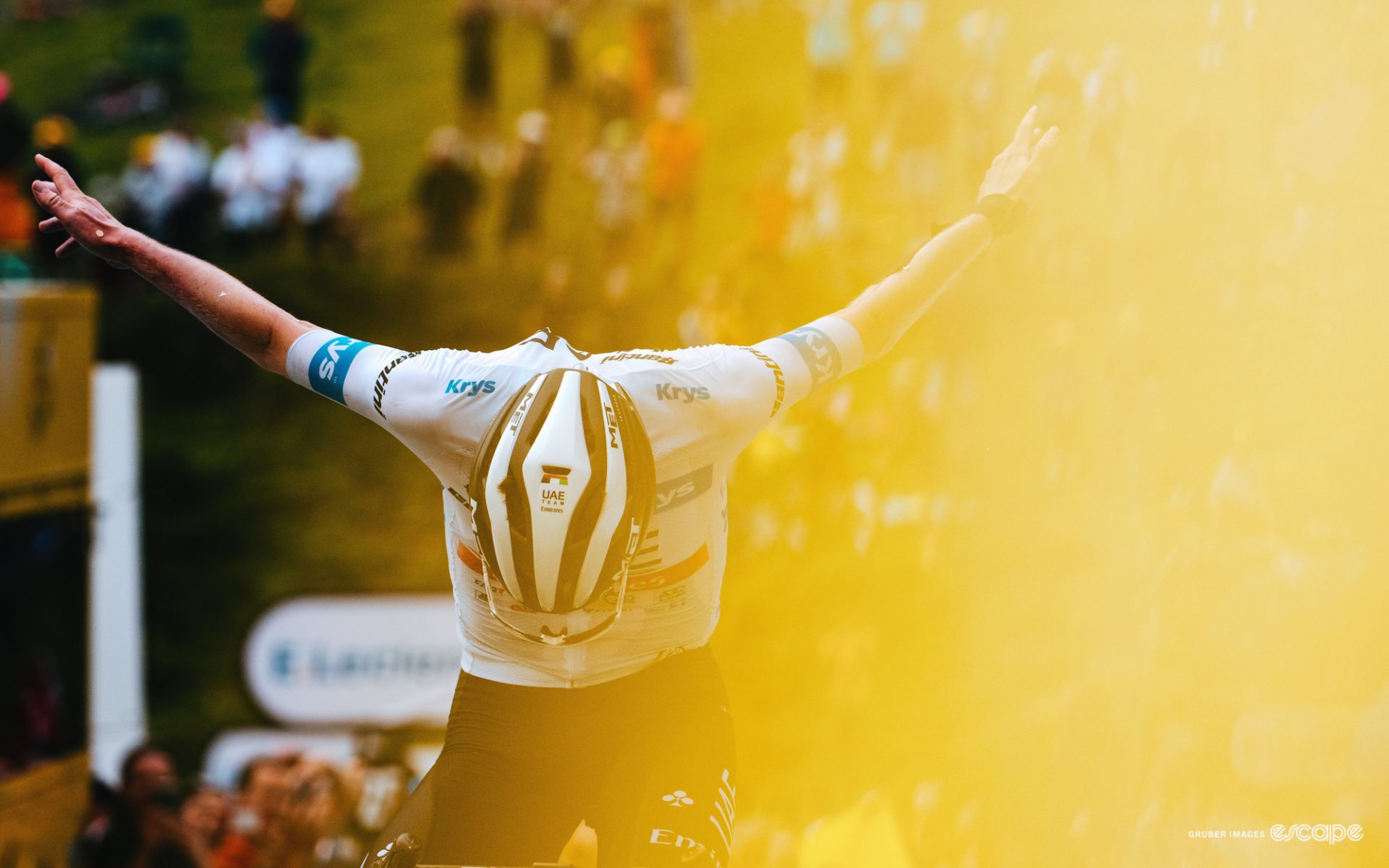Better one day, bettered the next. That’s the story of the Tour de France so far. Tadej Pogačar and Jonas Vingegaard, locked in a game of anything you can do, I can do better. They’re so close, so similar thus far, that it feels increasingly like this could be a Tour won in the margins. A Tour settled by small decisions – tactics, even – rather than pure, brute strength, because the strength of the two brutes is so balanced.
How else can we explain the last two days? Vingegaard and Pogačar with one excellent day each, one slightly off day each. A few per cent here, a few there. Both are confident in their abilities, both willing to probe the other for weakness. Both seem aware of how close they are and how intentional they need to be.
The reaction to a close matchup could be defensive riding, as contenders seek to conserve energy for some unpredictable pivotal moment. Racing for small margins can mean three weeks of team control, waiting for time trials, waiting for others to crack. Racing carefully, wary of seconds. I have always believed that this approach was based in fear; fear of losing that overwhelmed everything. But our protagonists this year don’t do wary. They seem fearless. Their version of winning in the margins is different.
Each stage, both teams come in with a plan. They place riders in breaks, sent out like pawns on a chess board in the hope that they prove useful later in the game. They pick out key segments of the course; they watch wind directions and weather and map gradients. And then they try to execute.
On stage 6, buoyed by Vingegaard’s rampage the day before, Jumbo-Visma tried the Galibier/Granon move from last year, minus the contributions of Primoz Roglič. They smelled blood and, working off the assumption that Pogačar is only likely to get better from here, wanted to put this Tour to bed before we get out of the Pyrenees. They put Wout van Aert in the break, just like last year. They set an infernal pace up the penultimate climb (the Tourmalet this year, Galibier last year). Pogačar and Vingegaard went over the top together, just like last year, then caught Van Aert on the descent, and he pulled them into the final climb. All just like last year.
It didn’t end in the same way. Last year, it was the day Vingegaard won the Tour de France. This year, it was proof that he could still lose it.
Three differences: The climb to Cauteret is not the Granon. Vingegaard was not on a great day. And Pogačar saw it coming.
The last one might be the most important. Pogačar has now seen this movie before. A few times, in fact. “I just kept telling myself I need to hold onto the wheel and not give up until the top, then it would be just me, Jonas and Wout for the last climb,” he said after the stage. He knew what they were doing on the Tourmalet. He knew the trap that lay ahead. He knew that if he stuck with Vingegaard, Van Aert effectively became a domestique for both of them. If he lost Vingegaard, Van Aert would pull Vingegaard away from him. “If I lost the wheel there, it would be a bit more problematic,” Pogačar said, underselling that scenario dramatically.
He didn’t lose the wheel, of course. He ate well, hydrated, stayed calm, and didn’t pull. He wanted to attack, but his directors said no. Not this year; this year we wait.
It worked. And when his patience ran out, he attacked. Vingegaard had no response, and half the time taken Wednesday was returned 24 hours later.
The Tour is on. It’s evenly matched. The thing about racing in the margins is that they can, and will, tilt back and forth depending on the smallest of inputs. And so we look to the Puy de Dôme and wonder which way the Tour will swing.
Did we do a good job with this story?



